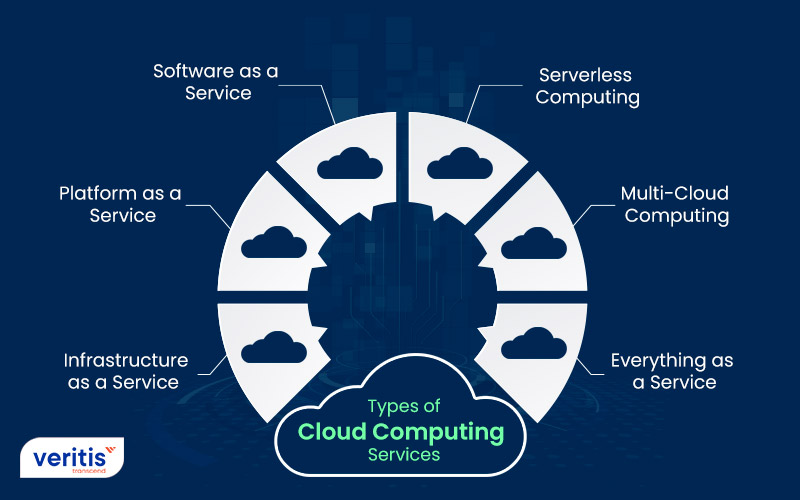Simplify Your Framework With Cloud Provider
As services navigate the ever-evolving landscape of modern technology and data monitoring, the duty of cloud solutions in simplifying infrastructure has actually become progressively famous. The attraction of streamlined processes, improved effectiveness, and enhanced resource allotment via cloud solutions is indisputable. The trip in the direction of a much more dexterous and affordable IT framework entails even more than simply moving to the cloud. It calls for a strategic approach and a deep understanding of the subtleties of cloud fostering. Just how can organizations properly navigate this shift and genuinely open the capacity of cloud services for simplifying their facilities?
Advantages of Cloud Services
Cloud services offer a structured strategy to managing IT infrastructure, providing businesses with versatility, cost-efficiency, and scalability. One of the essential benefits of cloud solutions is the scalability they supply.
Furthermore, cloud services get rid of the requirement for services to buy expensive software and hardware. This cost-efficiency is a significant benefit, specifically for little to medium-sized business aiming to minimize upfront costs. By making use of cloud solutions, businesses can access premium IT sources without the large cost associated with conventional infrastructure configurations.
Additionally, cloud services provide organizations with the flexibility to access their information and applications from anywhere with an internet link. This level of availability boosts partnership among teams, enables remote work, and boosts total productivity. The flexibility used by cloud solutions empowers services to adjust quickly to altering market problems and consumer needs.
Cost Savings and Scalability
Along with the functional advantages highlighted previously, the assimilation of cloud services right into a company's framework produces significant expense savings and enhanced scalability. Cloud services use a pay-as-you-go version, enabling services to range resources up or down based on present demands, thus avoiding the expenses associated with keeping excess capacity. This adaptability allows business to adjust promptly to varying demands without incurring unneeded expenses.
Furthermore, cloud services get rid of the need for upfront investments in equipment and software, lowering capital investment. Operating expenditures are likewise lessened as business no longer need to take care of and preserve physical servers, leading to reduced energy consumption and IT staffing prices. Furthermore, cloud services offer automated updates and maintenance, ensuring that the infrastructure stays safe and current without needing hands-on interventions.
Boosted Protection Steps
Applying stringent safety and security measures is paramount when integrating cloud services into a firm's facilities to ensure and safeguard sensitive data conformity with sector laws. Cloud solution companies use boosted safety attributes such as information file encryption, firewall software security, and multi-factor verification to mitigate cybersecurity risks.
In addition, regular security audits and compliance assessments assist identify susceptabilities and guarantee adherence to market requirements. Business can additionally gain from functions like computerized protection updates and real-time risk monitoring offered by cloud solution suppliers. By prioritizing safety procedures and remaining proactive in attending to possible threats, companies can with confidence utilize cloud solutions while safeguarding their important data from unapproved accessibility or breaches.
Transitioning to Cloud Facilities
To effectively integrate cloud solutions into a business's infrastructure, an organized approach that resolves the shift towards cloud-based remedies is vital. Transitioning to cloud facilities entails careful preparation and execution to ensure a smooth movement procedure. The very first step is to assess the existing infrastructure and pop over here determine which systems and applications appropriate for movement to the cloud. This assessment needs to think about aspects such as information sensitivity, conformity demands, and performance demands.
As soon as the evaluation is full, a migration method should be established. This method ought to lay out the timeline, resources, and obligations for moving each part to the cloud. It is vital to communicate this strategy clearly to all stakeholders to ensure alignment and reduce interruptions throughout the change.
Throughout the movement process, screening and tracking are essential to determine and resolve any kind of concerns without delay. Normal checkpoints should be established to track progression and make required modifications. Additionally, training for employees on making use of cloud solutions should be given to ensure an effective change and maximize the advantages of the new infrastructure.
Best Practices for Cloud Fostering
Successful fostering of cloud solutions hinges on the calculated placement of company goals with technological capacities and business preparedness. To make sure a smooth shift to the cloud, organizations ought to start by performing an extensive evaluation of their existing facilities and recognizing which work are best fit for cloud movement. It is essential to involve key stakeholders from different departments in the decision-making procedure to obtain buy-in and attend to any problems at an early stage.
Another finest method for cloud adoption is to focus on safety and security and compliance. Organizations has to very carefully review the safety and security steps offered by cloud service companies and make certain that their data over at this website is protected according to market standards and regulative demands. Carrying out robust information encryption, accessibility controls, and normal safety audits can aid minimize threats related to cloud fostering.

Verdict

As organizations navigate the ever-evolving landscape of modern technology and information administration, the role of cloud services in streamlining facilities has come to be significantly popular - linkdaddy cloud services press release. How can services efficiently browse this shift and absolutely unlock the potential of cloud services for streamlining their facilities?
Cloud solutions offer a streamlined technique to handling IT infrastructure, providing services with flexibility, cost-efficiency, and scalability. By making use of cloud solutions, businesses can access high-quality IT sources without the large rate tag connected with conventional facilities setups.
To make sure a smooth transition to the cloud, organizations need to begin by conducting an extensive assessment of their current infrastructure and determining which work are best matched for cloud migration.